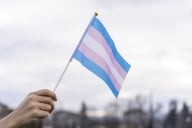You have /5 articles left.
Sign up for a free account or log in.
I have been in the United States for 14 years now, and not a day has passed by without me being reminded of my Arabness.
While some folks are legitimately curious about what it means to be Arab American, others make comments that range from naïve microaggressions to flat out racism. I still remember the first academic orientation I attended after being hired as an assistant professor, when after I introduced myself, some colleagues asked me for a hummus recipe—as if somehow being Arab automatically meant that I was a great cook or that I had access to the secret ingredient Arabs use in their food.
I wish I could say that that was an isolated incident, but it was not. And my humanity is often reduced in such a way to one single item in my culture.
I also have had people ask me if I have ever ridden a camel, if I had to walk behind my father or if I grew up in a tent. I had folks “jokingly” inquire whether I know how to make homemade bombs from cleaning detergents. I also had people treat me as an “angry Arab” and ask me to lower my tone and to learn how to speak appropriately to Americans.
While I may swallow my pride, bite my tongue and give away the top-secret ingredient in the hummus recipe (spoiler: it’s chickpeas), I must admit that the other comments hurt. And I am not generalizing when I say that my experience is not unique, as it reflects the reality of most, if not all, Arab Americans.
For such comments and questions reveal an alarming level of misunderstanding, if not ignorance, of the Arab American community, a population of around three to four million. They indicate the internalization of an orientalist and colonialist image of Arabs, an image that reduces us to simplistic or dangerous stereotypes whereby we are perceived either as dark and dangerous (usually in the case of those who identify as men) or as oppressed and vulnerable (usually in the case of those who identify as women or queer). Further, those comments and questions imply that we do not belong, that we are outsiders, eternally foreign to the United States with our different food, dress code and traditions.
Nothing could be further from the truth, for the Arab American community is not new in America. Our story can be traced back to the early 1800s, when thousands of migrants arrived from Lebanon, Syria, Egypt, Jordan and Iraq—a time when the region was mostly under the thumb of the Ottoman Empire. Today, according to the Arab American Institute, “the majority of Arab Americans are native-born, and nearly 82 percent of Arabs in the U.S. are citizens.”
Yet despite this history, Arab Americans are treated as foreigners and un-American. Shockingly, we are also considered white.
White Without Any White Privilege
Legally, Arab Americans and Middle Easterners must identify as white on federal forms, due in part to the Naturalization Act of 1790, which limited access to U.S. citizenship to white immigrants. As Khaled A. Beydoun demonstrates in his study “Between Muslim and White: The Legal Construction of Arab American Identity,” the legal system in the U.S. conflated—and continues to conflate—Arabs’ and Muslims’ identities. And because Muslims could not be considered white, Arabs could not be seen as white, either. This racist policy that remained in effect until 1952 forced many Arabs, especially Arab Christians, to assimilate into whiteness to ensure their citizenship.
Furthermore, the Johnson-Reed Immigration Act of 1924 established quotas to reduce immigration from Asia. Countries like Syria and Lebanon were deemed racially inferior, which drastically reduced the migration of their people to the United States, and the few who were admitted had to claim to be white.
The narrative surrounding the terrorist attacks of Sept. 11 contributed largely to the racialization of Islam and to the conflation of Muslims with Arabs and Middle Easterners. With that conflation came the rise of Islamophobia and hate crimes against a community that is legally seen as white but is treated as nonwhite and without any white privileges. The “Muslim ban” of 2017, which restricted travel from seven Muslim-majority countries to the United States, aggravated those trends.
Despite prejudice and discrimination, Arab Americans and Middle Easterners are expected to check the white race box for all federal forms, which means that our lived reality does not match our legal identification. The consequences of this dissonance are grave, causing us to feel invisible in the eyes of the law. We are not counted in the U.S. Census—crucial for the distribution of federal funds for services such as financial aid for students, health care, education and the like. Arab Americans and Middle Easterners are also not fully protected by the law as an underrepresented group, which, for instance, makes attacks on Arabs possibly exempt from prosecution under federal hate crime laws. Nor do we benefit from affirmative action.
There were efforts to amend the most recent census and add a MENA category—a Middle Eastern/North African box—an addition that would cover folks from the Arab world and Middle Eastern countries like Iran and Turkey. But, during the Trump administration, the U.S. Office of Management and Budget squashed the petition.
The battle is not over; scholars continue to push for a census amendment. Their motivation is founded on academic scholarship but also on the important fact that most Arab Americans and Middle Easterners do not identify as white. Moreover, most Americans do not see us as white. Recently, the Census Bureau announced that it will investigate the question again for the 2030 count.
The Impact on Higher Education Now
Today, campus reports on racial bias and racist incidents may be inaccurate, as such offenses against Arab Americans and Middle Easterners fall into the “white” box. Campus reports might have a category for religious bias, which will certainly capture cases of Islamophobia, but they will rarely, if ever, include racism against non-Muslim Arab Americans and Middle Easterners.
That means that if a person is Arab or Middle Eastern and called a “dirty Arab,” it does not fall under religious bias but under “white-on-white crime.” So Muslim Arabs and Middle Easterners may have a thin layer of protection, but non-Muslims have none.
The absence of MENA category also means that institutions do not know who their students, faculty, staff and alumni of Arab and Middle Eastern descent are. Institutions cannot trace their accomplishments or failures. They also cannot assess their students’ performance on admissions tests or academic needs. They cannot tell stories of successful alumni or reach out to the wealthy among them to ask for their financial support.
During the pandemic, many institutions connected with students from underrepresented groups to assess their physical and mental needs and to inquire about their living conditions. Arab American and Middle Eastern students were left out of those statistics, as they had been forced to check the white box on the admission forms. And when it comes to scholarships and financial aid, those students usually fall into the cracks, as well.
For Arab American and Middle Eastern professors, the obstacles are different but equally challenging. Students from underrepresented groups and international students tend to perceive us as either faculty of color or foreign faculty. As a result, they solicit our help much more than white faculty, so like other faculty of color, we often have a higher volume of service—and one that often goes unrecognized by the institutions.
Further, Arab and Middle Eastern professors—especially the untenured among us who teach controversial topics such as the Arab-Israeli conflict or the 2003 Iraq war—must either restrict our own academic freedom by refraining from sharing some facts or thoughts or must navigate students’ emotions and accommodate their fragilities. That concern about how to teach and what to teach takes an emotional toll on many of us, as we must also worry about students’ and peers’ evaluations.
In addition, Arab American and Middle Eastern faculty, students and staff are not considered when institutions plan their recruitment and retention policies. Mistakenly seen as white, our contributions to diversity are simply dismissed.
What’s more, there is a gap in the curriculum: studying the Arab world and the Middle East is often limited to the departments of history, political science or Middle Eastern studies, where courses tend to focus on the Arabic language and Islam, wars and terrorism, oil and wealth in the Arab peninsula, and women’s oppression. Beyond a handful of institutions, one rarely sees courses on Arabic music or literature, the cultural and religious diversities in the Middle East, or topics that focus on the beauty of the Arab and Middle Eastern worlds.
And research grants rarely consider Arab American and Middle Eastern scholars as underrepresented groups, and most grants look at the Arab world and the Middle East as a scary place that needs to be studied and examined from all angles. A lot of money is thrown into security and terrorism studies.
In short, Arab Americans and Middle Easterners feel simultaneously visible and invisible. We are visible because our identities come with the burden of political meaning. Yet we are invisible because the law falsely sees us as white—but white without privilege.
It’s time for change. Higher education institutions, especially those committed to equity and diversity, must join the fight and lobby for recognition of the MENA category. They should also add the MENA category on all their forms to give the Arab American and Middle Eastern communities the visibility and protection we deserve.
Perhaps then—when the MENA category is accepted, the census amended and Arab American and Middle Eastern professors properly recognized—I won’t be so offended when asked for the hummus recipe. I will gladly give it away and throw in the one for baba ghanouj, as well.




